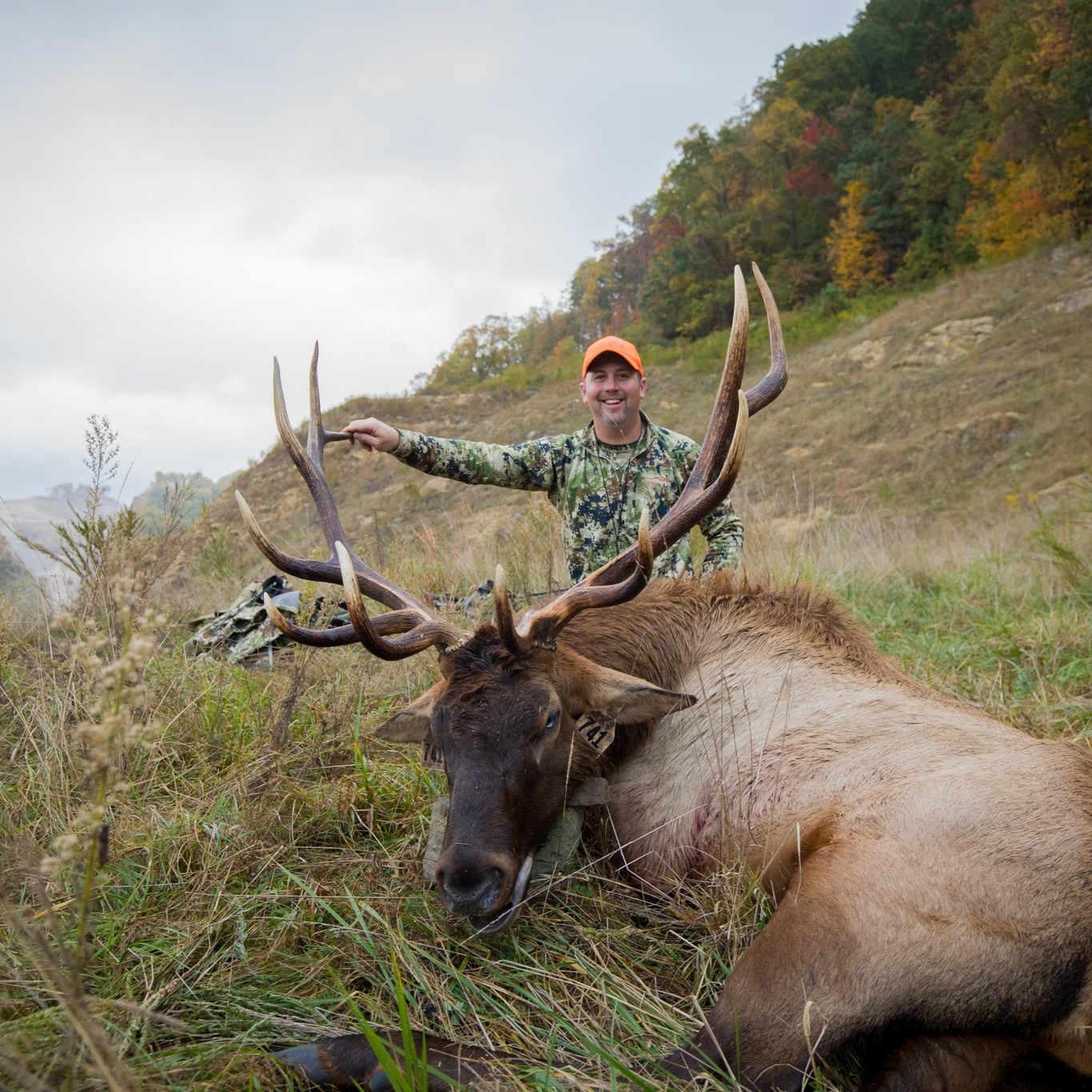Congratulations to the six lucky hunters that enjoyed successful Virginia bull elk hunts this fall. In early October, the Virginia Department of Wildlife Resources (DWR) hosted its second managed elk hunt in the Elk Management Zone of Virginia. The multi-day event was made possible thanks to the efforts of DWR staff, private landowners, and volunteers from Southwest Virginia Sportsmen, Rocky Mountain Elk Foundation and DWR’s Volunteer Program.
This second year of elk hunting in Virginia was the manifestation of a many prior years of management and foresight. Elk were historically found throughout eastern North America, including Virginia. However, by the late 1800s, unsustainable hunting and habitat alteration resulted in the extinction of the eastern elk. The last survivor of Virginia’s original elk herd was killed in 1855 in Clarke County.
Starting in 2012 and continuing into 2014, DWR released 75 elk within the current Elk Management Zone (EMZ) comprised of three counties: Buchanan, Dickenson, and Wise. Since 2014, the elk population in Virginia has grown, and with this increase has come challenges and opportunities.
While elk spend much of their time in forested areas, the majority of their diet consists of grasses and forbs that they find in field openings on private lands and reclaimed strip mines. They use wooded areas primarily as a refuge from heat, and likely to avoid human disturbance. While in the forested areas, they do feed on a variety of understory plants and leaves of browse species. However, quick access to quality grass and forb forage in open areas is necessary for an elk herd to be sustainable in an area.
The focal area identified for the restoration of the current Virginia elk in 2012 through 2014 was 2,600 acres at an average elevation of 2,000 feet in Buchanan County that had seen significant coal mining efforts in the past. Strip mining for coal involves the explosive removal of mountaintops, including trees, vegetation, and earth, to expose coal seams, which are then removed. Regulations require that the mining companies mitigate the damage with restoration efforts, which usually include replacing the rubble of stone and earth created by the explosion and covering it with topsoil and seed. Theses strip mine locations were ideal in terms of the combination of wooded and open areas, but the habitat and forage needed improvement to sustain an elk herd.
DWR would not have been able to achieve the elk restoration without the work (much of it through volunteers) and partnerships with groups like the Southwest Virginia Sportsman, Rocky Mountain Elk Foundation, and other local and national conservation groups. These groups partnered with DWR to provide funding and the work needed to transform the former strip mine site into quality elk habitat. This habitat work focused on improving soil quality, mechanically removing invasive plant species and woody vegetation, and seeding seed mixes that provide quality forage and cover for elk. These habitat modifications have encouraged Virginia’s elk herd to remain stable in small home ranges, with the majority of the herd staying within 5–10 km (3.1–6.2 miles) of the original restoration site. In summer, the elk rarely feed in openings during the heat of the day. Instead, they bed down under cover, forest, or other dense vegetation, and begin to feed shortly before dusk and continue through the night. During the cooler months, they feed in open areas throughout the day.
Given the controversy associated with elk restoration in Virginia, and an expressed recognition of need for having an elk management plan, DWR contracted Virginia Tech in 2016 to initiate a facilitated public involvement process leading to the development of the Virginia Elk Management Plan.
This 10-year management plan consists of four overarching guiding principles and five goals that lay out how DWR intends to manage a sustainable population of elk in the EMZ for the benefit of all constituents of the Commonwealth. The agency sought professional input and the shared wisdom of wildlife managers from other eastern states where elk recently have been established to help guide management. However, the core of the plan reflects value choices expressed by a diverse array of stakeholders from across both public and private sectors who may be affected by or have interest in elk.
To accomplish this, a 17-member Stakeholder Advisory Committee (SAC) was convened to represent the interests of a cross section of stakeholders, including hunters, agricultural and livestock producers, homeowners, forest landowners, animal and ecological health interests, business and tourism industries, motorists, and local, state and federal agencies. The SAC was responsible for identifying goals that should drive elk management in Virginia.
DWR staff with technical expertise in matters related to elk management comprised an Elk Technical Committee, which was responsible for developing the objectives and strategies to attain the goals set forth by the SAC and to assure that management is consistent with sound biological foundations and with Virginia Code and regulations. Additional public input obtained via a survey of stakeholders and through advertisement of the draft plan for broad public review has been incorporated to create the final plan. Resource managers and researchers external to DWR provided technical feedback on the draft plan.
The plan was presented to, and endorsed by, the DWR Board of Directors on March 21, 2019. The ability to offer a managed elk hunt is a testament to the program’s growing success. There are now more than 250 elk thriving in southwest Virginia.
If you are interested in hunting elk in Virginia the 2024 Virginia Elk Hunt Lottery will be announced in early 2024. In the meantime, you can learn more about the Virginia elk program here: dwr.virginia.gov/wildlife/elk/



